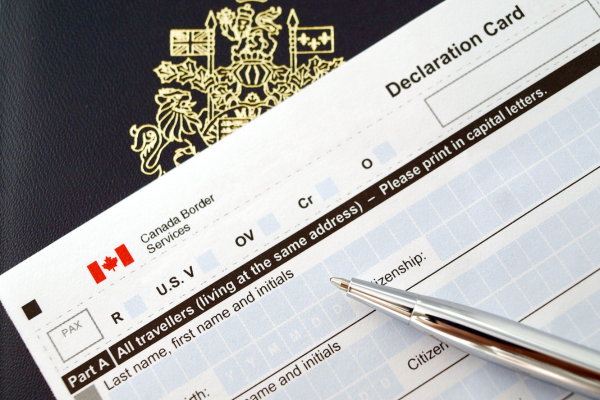Immigration in Canada: An Overview
Canada is a nation built on immigration, with a rich history of welcoming people from around the world. Immigration has played a vital role in shaping the country’s diverse culture, vibrant economy, and social fabric. In this comprehensive article, we will explore the various aspects of immigration in Canada, including the types of immigrants, the immigration process, and the benefits of immigrating to Canada.
Types of Immigrants in Canada
Canada’s immigration system is designed to accommodate a wide range of immigrants, each with their own unique circumstances and goals. The four main categories of immigrants in Canada are:
- Economic Immigrants: Skilled workers and business immigrants who contribute to the Canadian economy.
- Family Class Immigrants: Individuals sponsored by family members already residing in Canada.
- Refugees and Protected Persons: Individuals seeking asylum due to persecution or danger in their home countries.
- Temporary Residents: Individuals who come to Canada for a limited time, typically for work, study, or tourism.
Economic Immigrants
Economic immigrants are individuals who move to Canada primarily for employment opportunities. This category includes skilled workers and business immigrants who can contribute to the Canadian economy.
Types of Economic Immigrants
- Federal Skilled Workers: Individuals with specific skills and work experience who apply through the Express Entry system. They are assessed based on a points system that considers factors such as age, education, work experience, and language proficiency.
- Federal Skilled Trades: Workers in skilled trades who meet specific criteria and have a valid job offer or a certificate of qualification from a Canadian authority.
- Canadian Experience Class: Individuals who have gained skilled work experience in Canada and wish to apply for permanent residency.
- Business Immigrants: Entrepreneurs and investors who can contribute to the Canadian economy through business ownership or investment.
Family Class Immigrants
Family class immigrants are individuals who are sponsored by family members already living in Canada. This category aims to reunite families and promote social integration.
Types of Family Class Immigrants
- Spouses and Common-Law Partners: Canadian citizens and permanent residents can sponsor their spouses or common-law partners for immigration.
- Dependent Children: Parents can sponsor their dependent children for permanent residency.
- Parents and Grandparents: Canadian citizens and permanent residents can sponsor their parents and grandparents through specific programs.
Refugees and Protected Persons
Refugees and protected persons are individuals who seek asylum in Canada due to persecution, war, or violence in their home countries. Canada has a long-standing commitment to providing protection to those in need.
Types of Refugees
- Government-Assisted Refugees: Individuals who are referred to Canada by the United Nations High Commissioner for Refugees (UNHCR) and receive financial support from the Canadian government upon arrival.
- Privately Sponsored Refugees: Individuals sponsored by private groups or organizations in Canada who provide financial and emotional support.
- In-Canada Refugees: Individuals who apply for refugee protection after arriving in Canada, often due to an urgent need for protection.
Temporary Residents
Temporary residents are individuals who come to Canada for a limited time, typically for work, study, or tourism. This category includes foreign workers, international students, and visitors.
Types of Temporary Residents
- Temporary Foreign Workers: Individuals who come to Canada to work for a specific employer for a limited time. They typically require a work permit, which may be employer-specific or open.
- International Students: Individuals who come to Canada to study at designated learning institutions (DLIs). They require a study permit and may have the option to work part-time while studying.
- Visitors: Individuals who come to Canada for tourism or family visits. They may require a visitor visa or an Electronic Travel Authorization (eTA) depending on their nationality.
The Immigration Process
The immigration process in Canada involves several steps, depending on the type of immigration pathway chosen. Here is a general overview of the process:
- Determine Eligibility: Assess your eligibility for the desired immigration pathway based on personal circumstances.
- Gather Documentation: Collect all necessary documents, including proof of funds, language test results, educational credentials, and medical examination results.
- Submit Application: Complete the application form and submit it online or via paper, depending on the visa type.
- Pay Application Fees: Pay the required application fees, which can vary based on the visa category.
- Attend Interviews: Some applicants may be required to attend an interview as part of the application process.
- Receive Decision: Wait for the application to be processed and receive notification regarding the decision. If approved, applicants will receive instructions on how to proceed with their immigration.
Benefits of Immigrating to Canada
Canada offers numerous benefits for immigrants, making it an attractive destination for people from around the world. Some of the key benefits include:
- Diversity and Inclusion: Canada is known for its multicultural society and commitment to diversity and inclusion.
- Economic Opportunities: Canada has a strong economy with a wide range of job opportunities across many industries.
- High Quality of Life: Canada consistently ranks as one of the best countries in the world for quality of life, with a stable economy, excellent healthcare system, and vibrant cultural scene.
- Education System: Canada has a world-class education system, offering high-quality universities and colleges at affordable prices.
- Pathway to Citizenship: Many immigration pathways in Canada offer a pathway to permanent residency and, eventually, Canadian citizenship.
FAQ Section
- What are the four main types of immigrants in Canada?
- The four main types of immigrants are economic immigrants, family class immigrants, refugees and protected persons, and temporary residents.
- How do I determine my eligibility for immigration to Canada?
- To determine your eligibility, assess your circumstances based on the specific requirements of the immigration pathway you are interested in. You can use online tools or consult with an immigration professional for guidance.
- Can I bring my family members with me when I immigrate to Canada?
- Yes, most immigration pathways allow you to bring your spouse and dependent children. Family class immigrants can sponsor their family members as well.
- Do I need to know English or French to immigrate to Canada?
- Language proficiency is an important factor in many immigration pathways. Applicants may need to demonstrate proficiency in English or French through standardized tests.
- How long does the immigration process take?
- Processing times can vary based on the type of visa and individual circumstances, ranging from a few months to over a year.
- What are the costs associated with immigrating to Canada?
- Costs include application fees, which can range from CAD 150 to CAD 1,500 or more, and settlement costs such as housing, transportation, and living expenses.
- Can I work or study in Canada while waiting for my permanent residency application to be processed?
- Depending on the type of visa you hold, you may be able to work or study in Canada while your permanent residency application is being processed.
- What are the benefits of immigrating to Canada?
- Benefits include diversity and inclusion, economic opportunities, high quality of life, world-class education system, and a pathway to citizenship.
Relevant Links
| Immigration Type | Link |
|---|---|
| Immigration to Canada | https://www.canada.ca/en/services/immigration-citizenship.html |
 Skip to content
Skip to content



